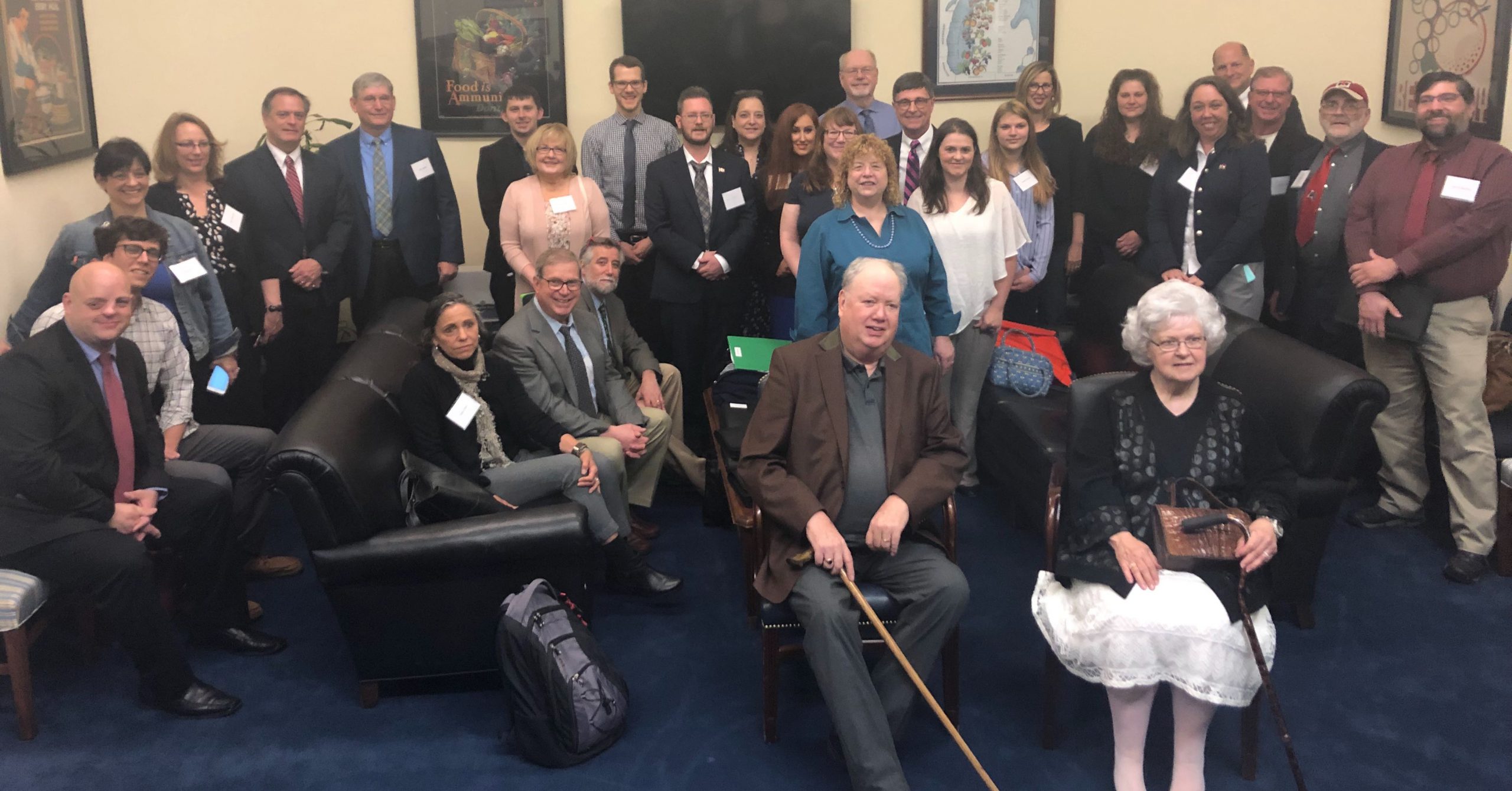A year ago last week, EPA held its “National Leadership Summit” on PFAS (per- and polyfluoroalkyl substances) in Washington, DC. The summit is best remembered for the people who were not in the room – only two representatives of communities whose water supplies have been contaminated by these “forever” chemicals were invited; some members of the press were actually ejected from EPA headquarters.
We recall the summit because, a year later, Safer Chemicals Healthy Families Mobilization Director Beth Kemler and I joined our DC-based colleagues from a number of partner organizations to accompany 29 people from affected communities in 16 states to meetings with nearly 100 Congressional offices in support of legislation to address the PFAS crisis.
The buzz around PFAS was magnified by a hearing in the Energy and Commerce Committee that same day on thirteen bills that had been introduced (so far) that fall under the committee’s jurisdiction. From being told that her family should not brush their teeth with water from the tap to being afraid to shower without a window open to unimaginably high blood levels of PFAS chemicals, Emily Marpe told the Committee in stunning detail about the real-life effects of learning about water contamination in her community of Petersburgh, NY.
Emily followed her testimony with meetings in other offices of the New York Congressional delegation. Adding to the drumbeat, our teams held meetings in House and Senate offices with dairy farmers from Maine and New Mexico whose herds have been contaminated, folks from the Philadelphia suburbs who were drinking contaminated water for years before the presence of poison was made public, and Alaska meetings with Senator Murkowski and Rep. Young about the need for action at known contaminated sites.
It’s notable that the work that we are doing on Capitol Hill has seen bipartisan support for many of the bills under consideration, which is indicative of the non-partisan nature of this environmental crisis. For example:
- The PFAS Action Act (H.R. 535/ S. 638), introduced in the House by Michigan Representatives Debbie Dingell and Fred Upton and in the Senate by Senators Capito (R-WV) and Carper (D-DE), would designate the whole class of PFAS chemicals as hazardous under the 1980 Superfund (CERCLA) law, which means that contaminated sites would be eligible for cleanup using existing authority.
- The PFAS Detection Act (H.R. 1976 /S.950), cosponsored in the House by Michigan Representatives Dan Kildee and Jack Bergman and 19 other members and in the Senate by Senators Stabenow (D-MI) and Rounds (R-SD), would authorize the U.S. Geological Survey to test surface and groundwater for PFAS, filling in some important gaps in our knowledge about the scope of the problem.
- Other proposals include a bill to add PFAS to the Toxics Release Inventory, requiring certain manufacturers and producers of PFAS to report their use of the chemicals to the EPA, which would then be publicly available, a ban on PFAS waste incineration and a program to provide grants to communities to install treatment technologies for PFAS in drinking water.
The action continued in the Senate last week with a hearing in the Environment and Public Works Committee, and the Senate Armed Forces Committee’s “markup” of the National Defense Authorization Act, which includes a measure to phase out the purchase of firefighting foams that contain PFAS. Military use of these toxic firefighting foams has contaminated as many as 400 military bases, according to the Department of Defense.
Indeed, it’s been a big couple of weeks on Capitol Hill for solutions to the growing problem of PFAS, and we can look forward to more action to come. Citizens across the country who are living with the toxic effects of these “forever” chemicals will keep calling for answers to this crisis.





